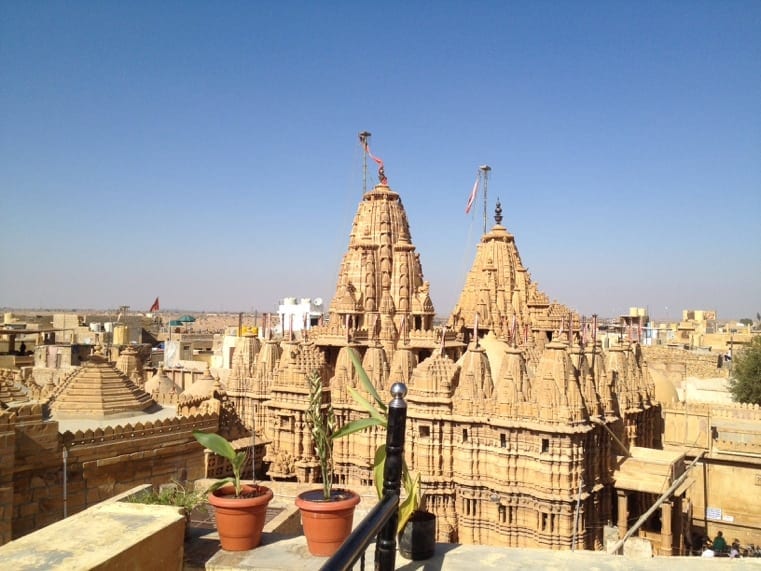Here is a secret you don’t know about me. I am a daydreamer, an over the top, lose myself in my own head, fantastical daydreamer. It used to drive my mother wild. I was forever getting lost, because I would begin to daydream and just lose my way and everyone else too. I have many memories of being lost on streets and in department stores as a child. I would come out of my reverie in a panic, because I was lost and even felt a little lost as I went from the dream reality in my head to the place where I actually was. My sister is probably the only living person who knows that about me. What even she probably doesn’t know is that I am just as big a daydreamer today. I have schooled myself a bit out of politeness, but I can still get lost in my own head. I still have it in me to drift off in the middle of a conversation or abruptly change the subject. I work on that because it is rude to the person I am talking to, but when it happens it is because either that person or something around us triggered a dream or stray thought that sticks with me and I follow it away from the conversation. Traveling triggers so many daydreams for me. The fort at Jaisalmer was definitely going to do that! I didn’t know it until I woke up this morning and there it was perched on top of a hill looking even more impressive than it had the night before. We also went on a desert safari, which will be covered in post 2 from today. Of course that had daydreaming written all over it too. Both the fort and the safari made me think of many of the books I have read.
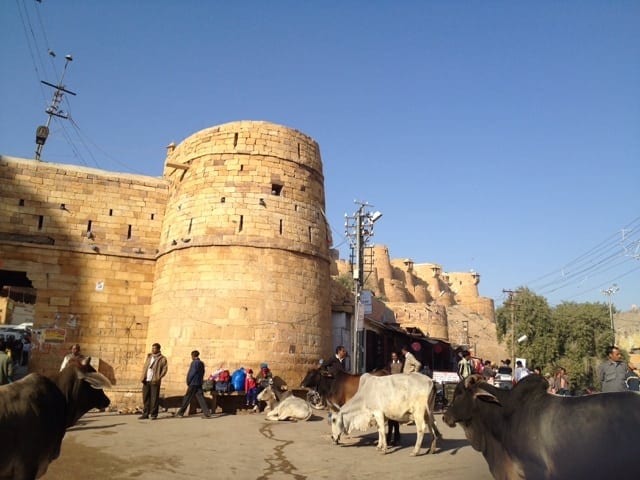
Why this fort more so than others we have seen? The fort at Jaisalmer is still in use. The fort at Jaisalmer is about 900 years old. It has been in continuous use that entire time. Because it is still in use, it is right there for you to see how areas are used and it has been kept up, not reconstructed, which sometimes loses something in the reconstruction. It was full of people in traditional dress, dogs, cats, a mouse, cows, and even a couple of goats. There are shops and restaurant, temples and priests, trash and poop. It is all there. All the perks and all the detritus too.
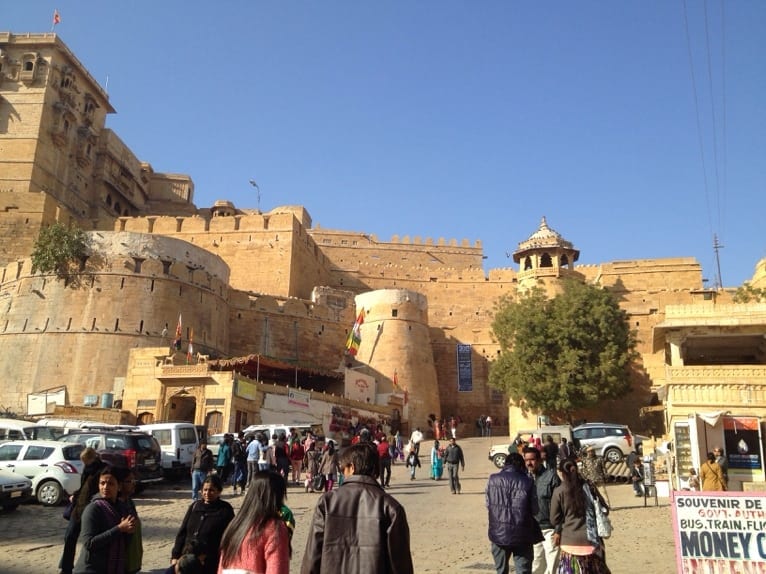
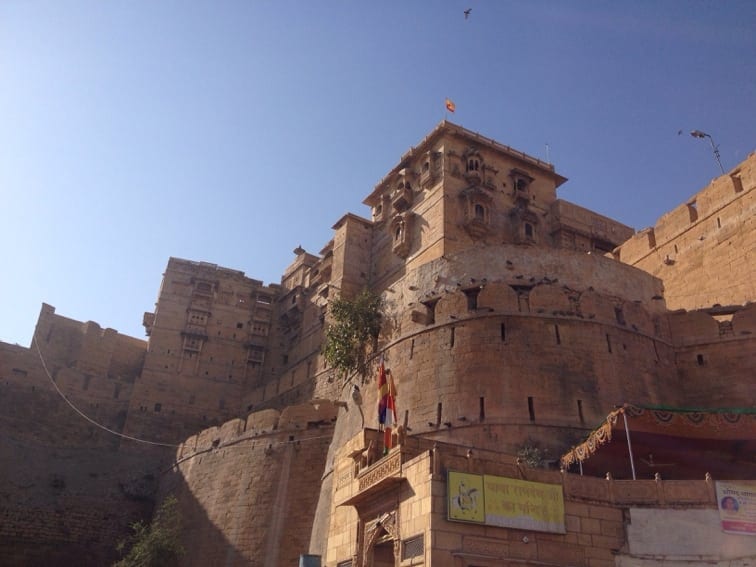
There were 3,000 people living inside this fort at one time. When I was in my teens I realized that not everyone can be the king or the queen. When people imagine themselves living in the past or dream about who they were reincarnated from (as some people like to do), they always imagine themselves as Queen Elizabeth or the King of the region, never as the the lowest scullery maid. I used to try to imagine myself somewhere in the middle. Now I don’t imagine being one person at all, I try to get a feel for the activity and the lives overall. These first photos show the hustle and bustle on the way up to the top of the fort. We are inside the first wall.
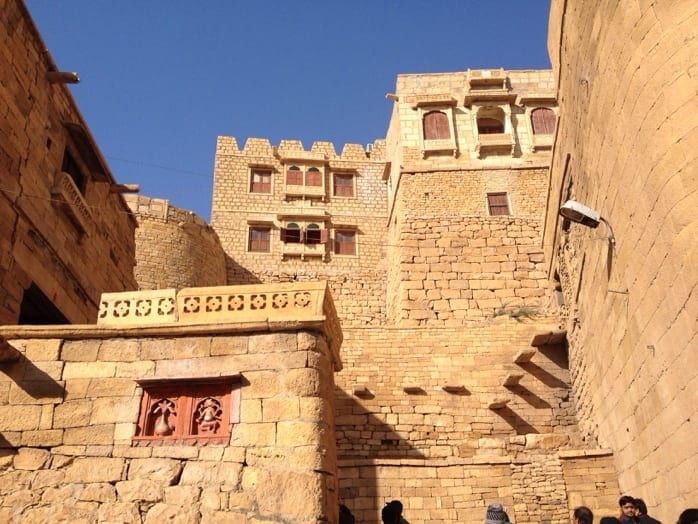
The first time we saw stairs like these was in Macchu Picchu. I wonder about the steps going across, what were they used for?
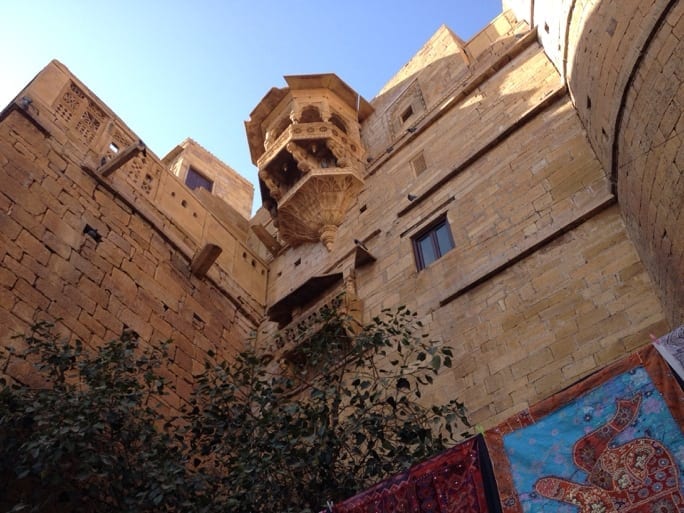
People used to dump slops out their windows. You would have to be careful walking up to the fort that nothing gross was thrown out of a window and landed on you. I wonder if people used to customarily yell something before they dumped things out the windows, something that has been lost as a part of history.
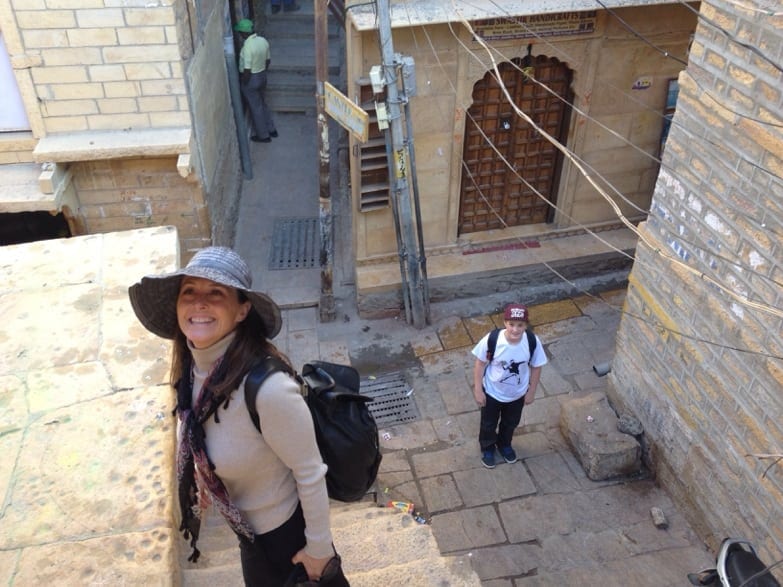
We have reached the top of sunny Jaislamer. Finally I need the hat I have dragged all over India.
It is 3.5 kilometers around the entire perimeter. We had about 3 hours to explore the fort today, which was not going to be enough time, because we were getting picked up to go on the desert safari at 2. We decided to go straight to the Jain Temple today. Tomorrow after we get back we will explore the fort more.


There were so many people trying to get into the temple that Jim and Sean let me go by myself. I walked up and in. It was crowded to get in but was not crowded once inside. We found out when we tried to get into the next temple that I was supposed to have had a ticket to get in to the first temple.
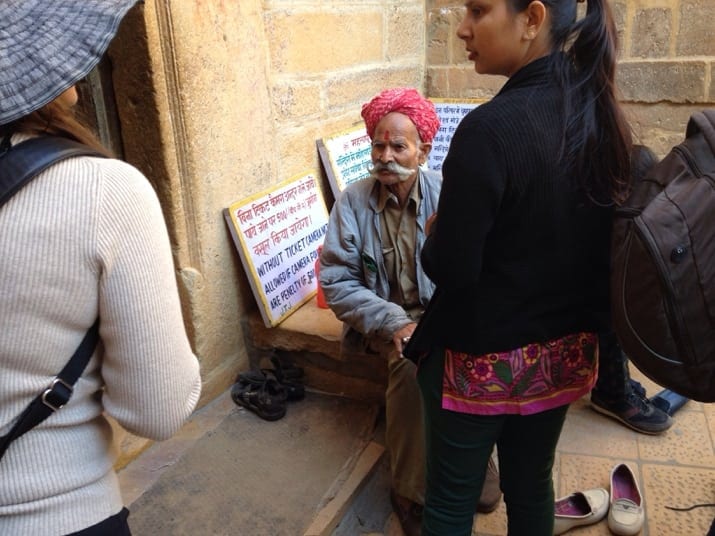
Here I am being told by the man in the turban that I need a ticket to see the inside of the Jain Temples, oops.
We were really lucky when we did buy the tickets to the temple, that is when we met Lavi, the person who taught me what I know about the Jain faith. Lavi owns a shop with his father right next to the temple. After viewing the temple, we sat in his shop while he shared tea with us, taught us about Jainism, and talked about how he wants to do business a different way, with better quality stock and without all the bargaining/haggling.
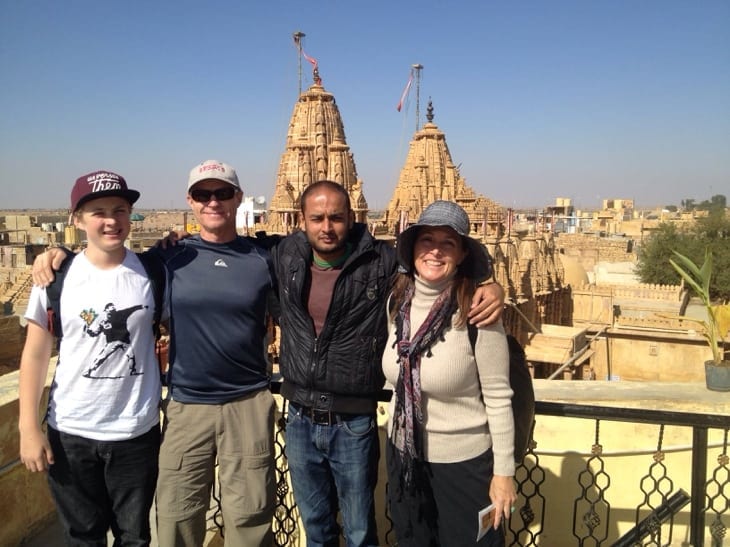
The Jain Temples were built at the fort with the permission of a Muslim King. The Jain faith comes out of Hinduism so why would a Muslim King agree to this huge Jain temple being built. One reason is back then it wasn’t about whether you were Muslim, or Hindu, or even Christian. The main problems with Muslims and Hindus came out of the separation into Pakistan and India.
Then it was about your allegiance to the ruler of the location you were at. There are 7 Jain Temples here. 5 of them are interconnected and it is interesting to go from one to the next…
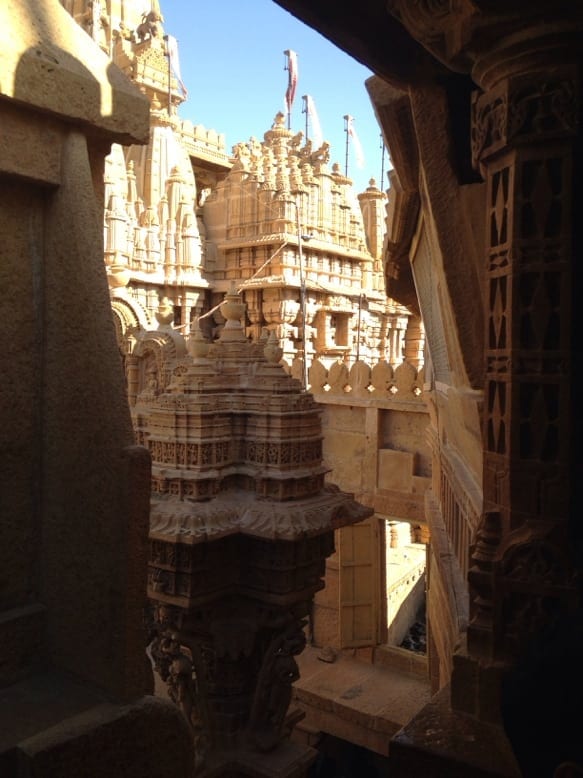
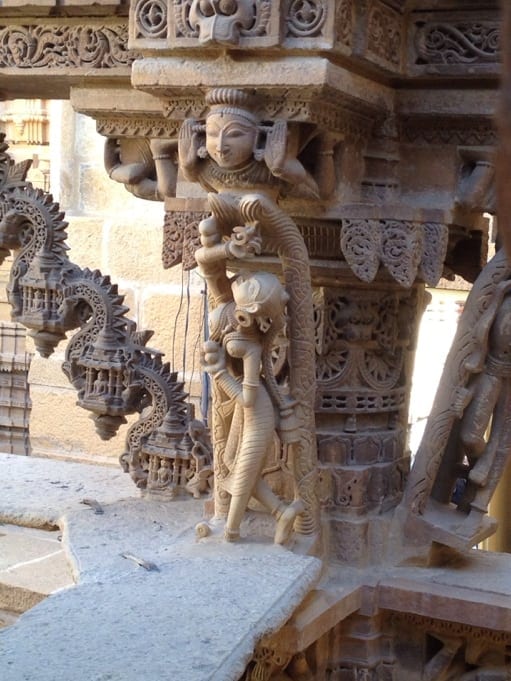
looking at the artistry in the intricate carvings, and walking on the smooth, huge stone floors.
They were built over 17 years during the 14th or the 15th century. When it was built Jaisalmer was on the silk route. The Jains were big silk merchants. Because they paid such high taxes to the king, when they asked to build a temple he king allowed it. It was dangerous to build outside of forts in those days.
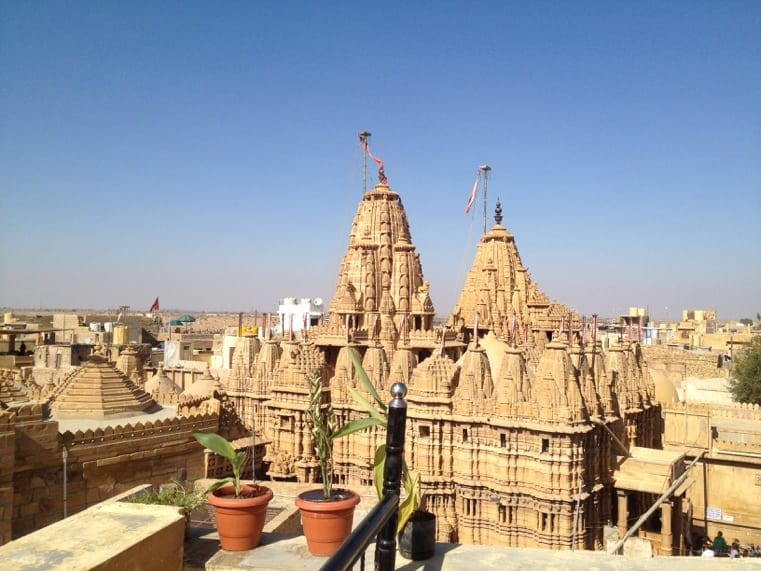
There was a scarcity of water in those days which made it difficult to make mortar. The Jains invented an interlocking style of architecture, where the stones stayed together without mortar. The Jain complex is named after the Muslim King, King Laxman, who gave them permission to build it. That is pretty cool if you think about it.

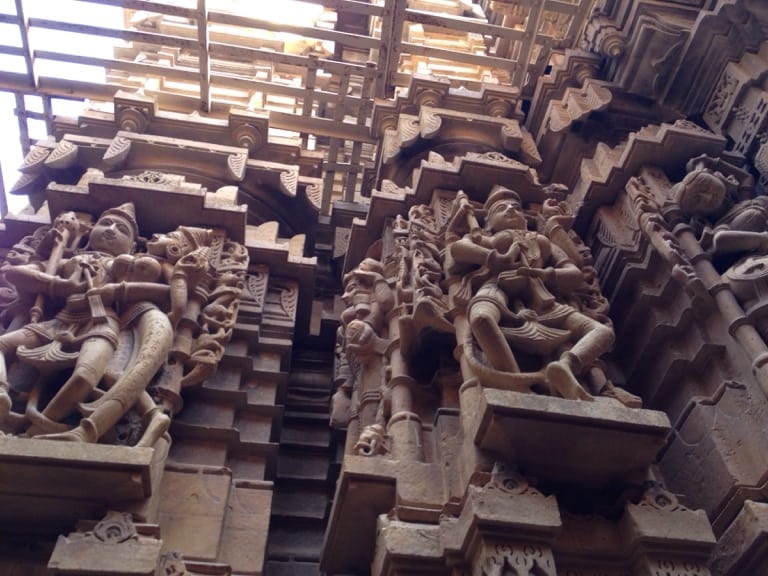
Jainism has no God. They believe that God lies within. I thought this was interesting and not sure I had it right so I went searching for a more complete statement. Here it is. “Jainism rejects the idea of a creator deity that could be responsible for the manifestation, creation, or maintenance of this universe. According to Jain doctrine, the universe and its constituents (soul, matter, space, time, and principles of motion) have always existed. All the constituents and actions are governed by universal natural laws and an immaterial entity like God cannot create a material entity like the universe….Jains believe that to attain enlightenment and ultimately liberation from all karmic bonding, one must practice the ethical principles not only in thought, but also in words (speech) and action.” http://en.wikipedia.org/wiki/God_in_Jainism

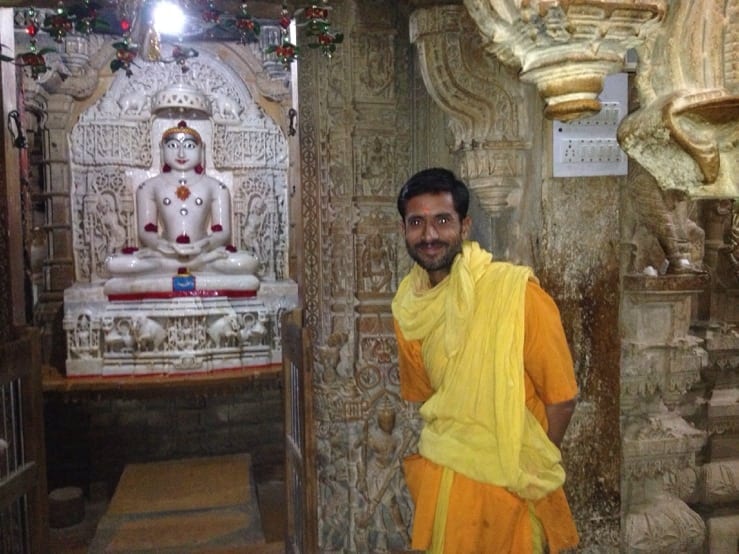
A Jain priest with a statue of Mahaveer
Jainism was founded by the prophet Lord Mahaveer also called Adinath. He founded the religion 2064 years ago. Jainism is older than Buddhism which started 40 years later. At this point in the conversation I had one of those random thoughts. “What must have been going on in the world about 2050 + or – a decade or two years ago? Three major faiths started at the same time, Christianity, Buddhism, and Jainism. All three of these faiths have as major tenets of their faith tolerance to all. If you look at what the three prophets Christ, Buddha, and Lord Mahaveer were preaching, it is about how to have a better more tolerant relationship with others, including at least for Buddhists and Jains non-human others. What was the catalyzing force causing this all to happen at that time? I wish I knew. Were they good times or bad times that led to these prophets’ messages? Were they aware of each other’s philosophies in which case they spurred each other on or were they figuring it out tabla rasa? Did they think of themselves and each other as philosophers or religious zealots?” I don’t know the answers to any of these questions. My initial thinking/bias is to find out if there were any environmental factors going on at the time, a decade long drought or mini ice age perhaps. Sean would argue that Buddhism and probably Jainism as well are not religions, but rather philosophies about how you should live your life. Sean does not believe atheism and Buddhism are mutually exclusive and I agree with him. I will have to get his take about whether an atheist can be a Jain.
Lord Mahaveer was the prophet who started Jainism. A God is someone no one has ever seen. A prophet is a person who sees a new way. Some people are enlightened by a prophet and some are not.
Jain is the Hindu word meaning pure. Jainism is based on 2 main principles.
1.) non-violence – this extends to hurting or negativity in any way. Jains do not believe it is okay to kill even a small ant. Accidentally is okay, but on purpose, no, that is not okay.
2.) pure vegetarianism – even root vegetables are not okay to eat because while plucking out these vegetables you might kill little animals that live around the roots.
The Jain community is divided into two parts, Shwetamber and Digamber. The Shwetamber Jains, the monks wear clothes in the temple, the Digamber Jains, the monks do not wear clothes in the temple. The Jain priests wear yellow and red. Jain women cover their heads and Jain men wear white suits. Jain people bathe before going in to temple and then change into their temple clothes.
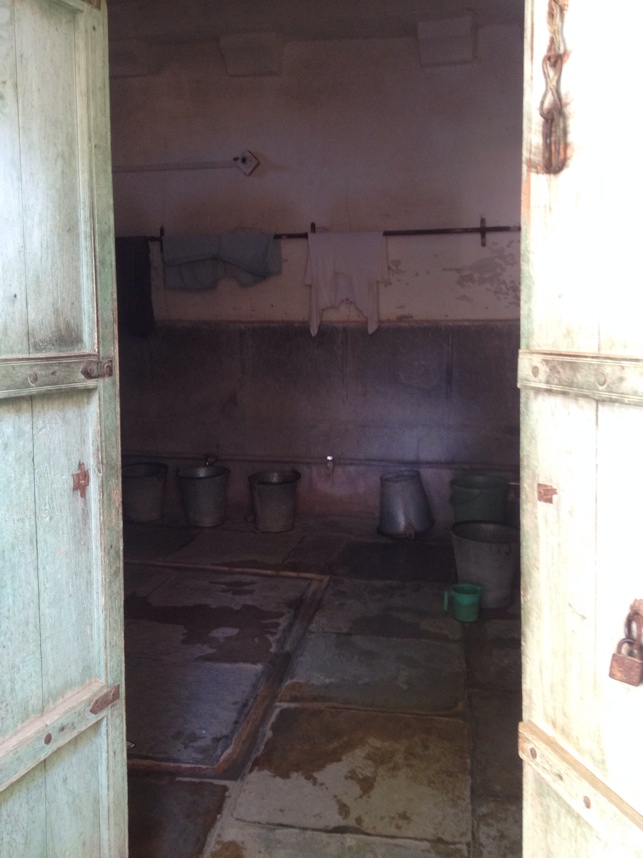
Here is the area where Jain men clean themselves before going to temple. Both Jain temple complexes we have been to had big courtyards with showers off of them.
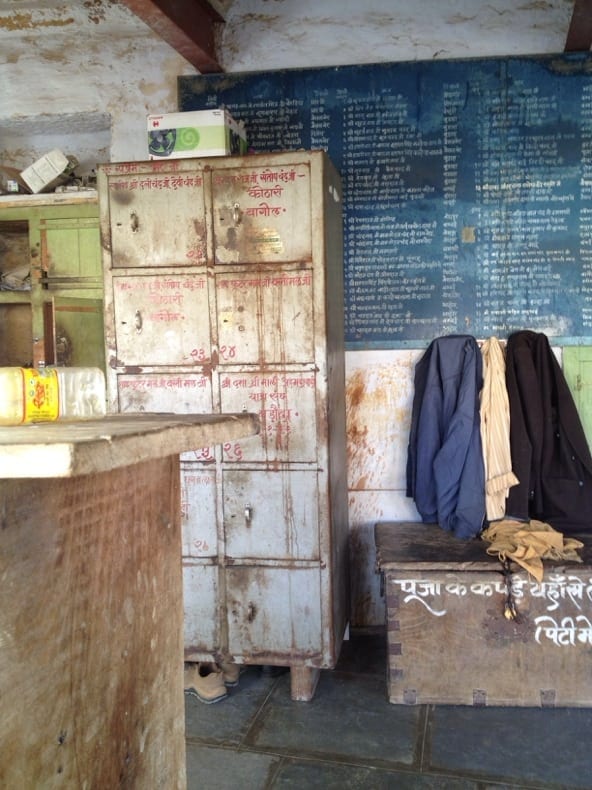
These lockers store clothes for people going to the Jain temple when they change into the clothes they wear inside.
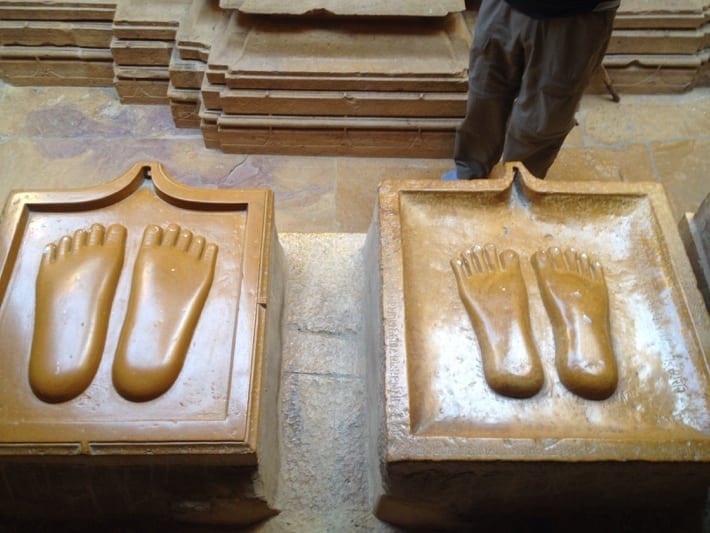
There are feet stones with holes in the bottom of the stones. People clean their feet with holy water, then they collect the water, and use it to bless with.
There are small doors and gates in the temple, this is to force you to bow down to the gods.
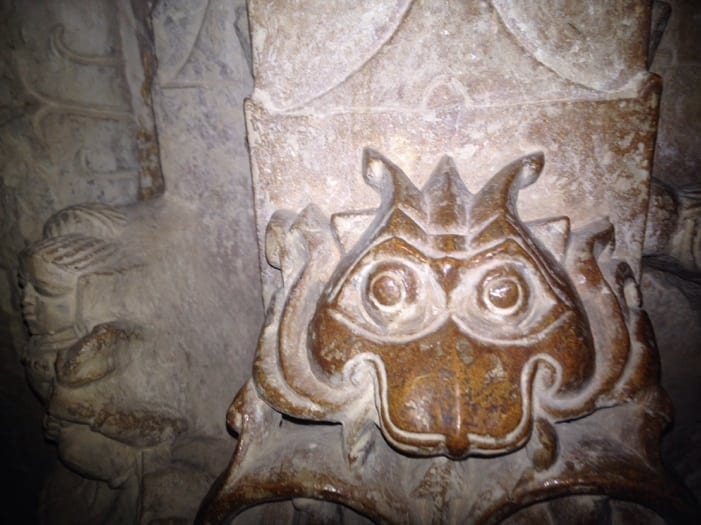
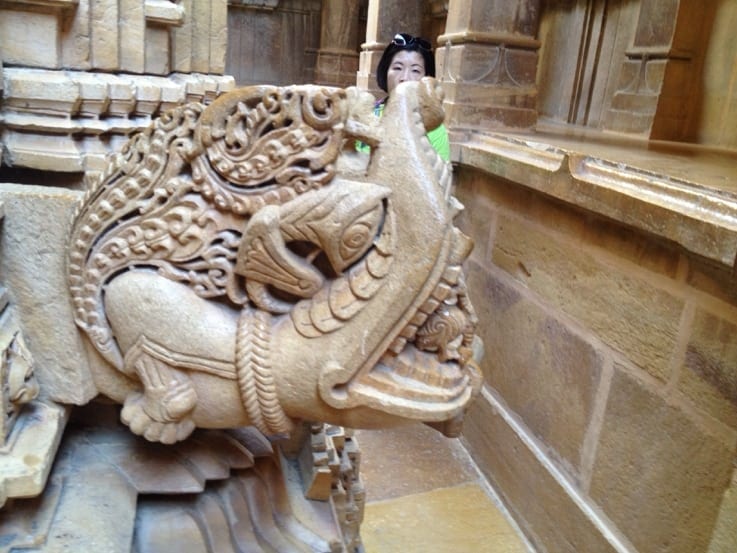
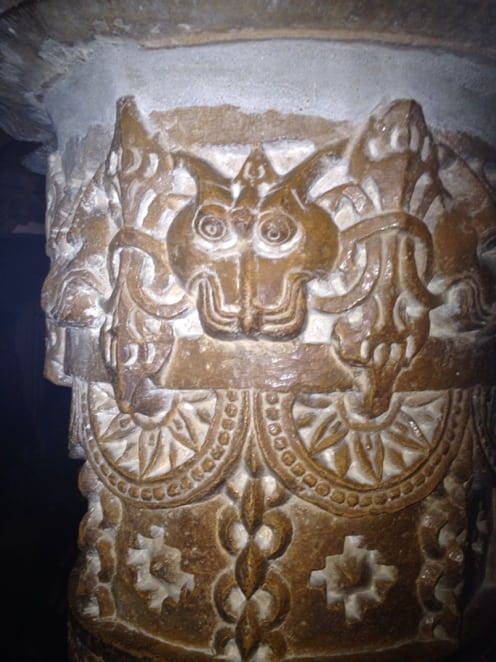

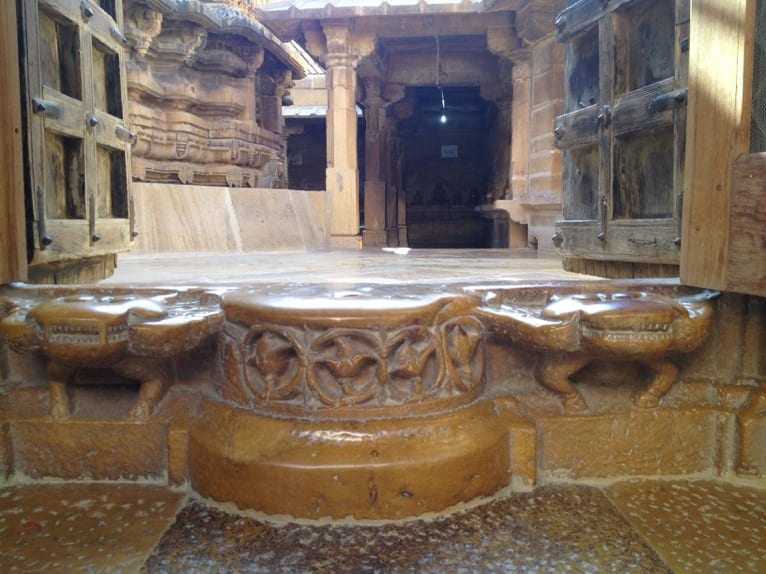
The dragons on the steps and columns are to scare the evil out of any people with bad intentions in their heart. The last photo is a shot taken straight on looking at the dragons. See the teeth and little legs. There were lots of dragon shots, because I was surprised to see them. And you know, the whole fairytale dreamer mood I was in this day.
There is a bell when you enter Jain temples. The bell tells God you are there.

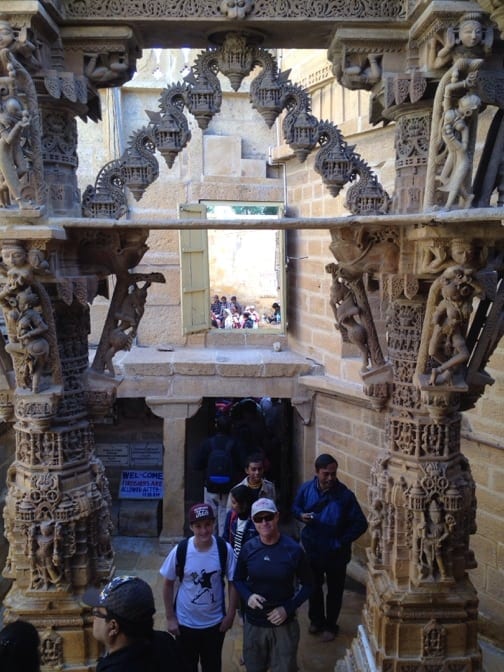
Statues of Buddha and Mahaveer look similar. There are differences.

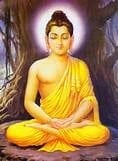
Here is an illustration copied from the Internet for comparison. This is Buddha. No one really knows what Buddha looked like. The real man who was Buddha would not let an image of himself be copied because he did not want people worshipping an image. I guess we don’t really know what any of these men looked like at this late date, do we? But this is a common depiction of Buddha.
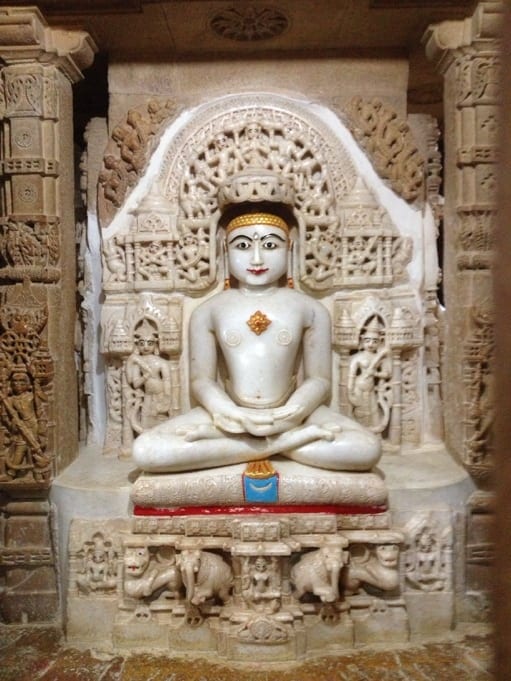
1.) Buddha sits in several different positions, Lord Mahaveer always sits in the same position.
2.) Lord Mahaveer is always naked
3.) Lord Mahaveer has his eyes open
4.) Lord Mahaveer has a lotus in the center of his chest
5.) all statues of Lord Mahaveer have a cobra on them.
6.) the top knots are different
There are 6,666 statues in Jain temples. 6 is an important number for Jains. There were 6*4 = 24 Jain prophets; all from a different era. The 24th prophet is their 1st prophet, Lord Mahaveer. The 1st prophet is the most recent prophet from sometime in the 18th century.
All this is very interesting but we need to eat lunch and go on a desert safari!
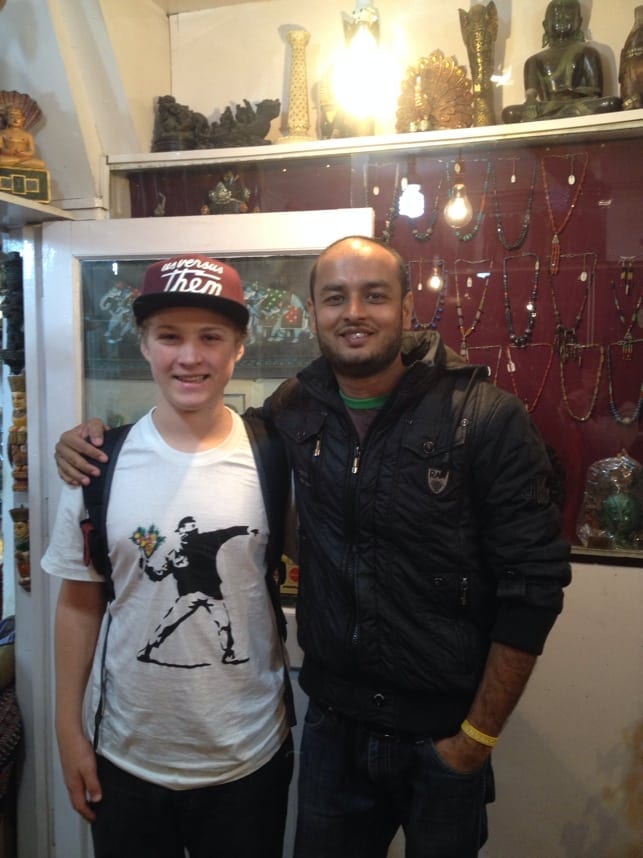
This is Lavi in his shop. Stop by if you are in Jaisalmer. Lavi speaks perfect English. We really enjoyed meeting him. Lavi’s father is a man with foresight. About 30 years ago (I hope I got that number correct) he opened his store directly across from the Jain Temple in Jaisalmer. It is a prime location. He also made sure his son could speak really good English. Lavi went to school to get a degree so that he could incorporate businesses, something an attorney would do in the US. He is now working in the family business.

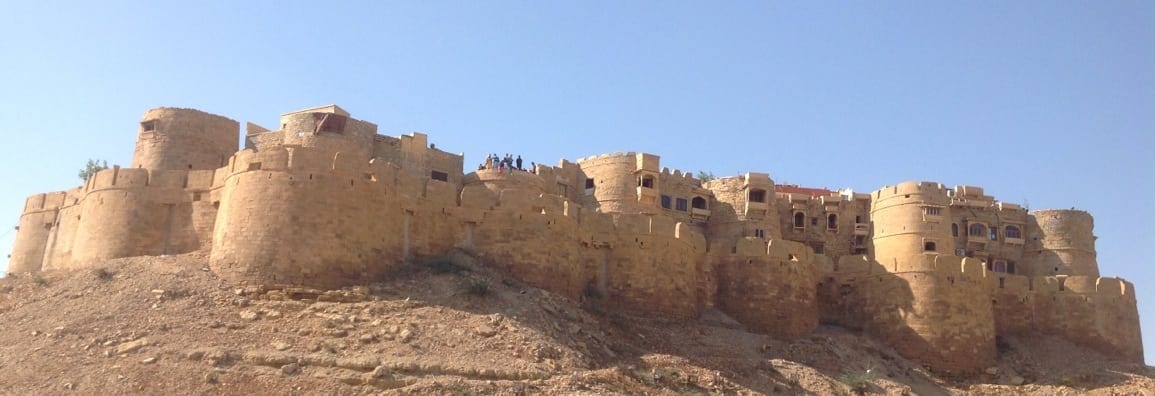
Here is the view from our hotel, 1st Gate, while we ate lunch. Now where is Sean, we need to go.


There you are 😉

